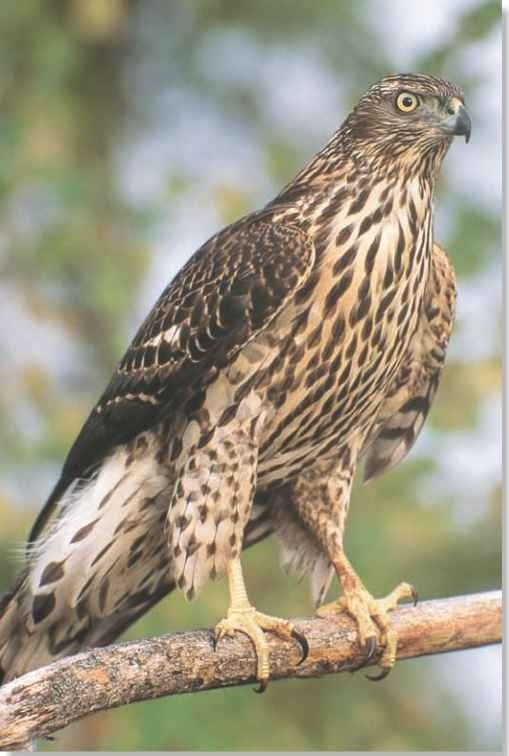ORDER
Falconiformes
FAMILY
Accipitridae
GENUS & SPECIES
KEY FEATURES
• Highly aggressive, it quickly kills its prey with the vicelike grip of its powerful talons
• Fiercely defends its nest from intruders, even attacking humans who venture too close
• Extremely acute vision allows it to quickly find and capture prey
• There are about eight subspecies of goshawk
WHERE IN THE WORLD?
Found in North America, from Alaska and Canada south through most of the United States and parts of Mexico; also found in parts of Asia, Africa and throughout most of Europe
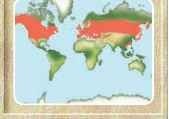
Lifecycle
The northern goshawk leads a mainly solitary life, often surveying hundreds of acres and feeding on a wide variety of prey, from grouse to grasshoppers.
HABITAT
The northern goshawk is widely distributed throughout the temperate regions ofthe world, including North America, Europe and parts of Asia and Africa.This hawk mostly inhabits mature woods with remote stands of tall timber, particularly coniferous forests, but also deciduous and mixed forests. Found from sea level in lowlands to the subalpine woods of mountainous regions throughout its range, the
northern goshawk prefers dense forests adjacent to large clearings, where it can hunt a wide variety of prey.
Open house The goshawk prefers forests close to open fields for hunting food.

CONSERVATION
The northern goshawk is not globally threatened, but is declining in many parts of its range. Habitat destruction and deforestation have caused significant declines, particularly in western Europe. Like all raptors, the goshawk is vulnerable to pollution, especially from pesticides and heavy metals that cause thinning of its eggshells and a decrease in its prey. The goshawk’s nest sometimes is robbed to provide birds for the sport of falconry. It is protected by law in the U.S. and is listed on Appendix II of CITES (Convention on International Trade in Endangered Species).
FOOD & HUNTING
Highly aggressive, the northern goshawk feeds on a wide variety of prey. Its diet mainly consists of small and medium-sized birds and mammals, including hares, rabbits, squirrels, chipmunks, weasles, ducks, grouse, quail, owls, small hawks and woodpeckers; it also eats insects, such as grasshoppers and caterpillars. Hunting from a hidden perch or surveying a large clearing while in flight, the northern goshawk swoops down on unsuspecting prey and catches
it on the ground; it may also skillfully dart and twist through the dense forest at speeds up to 38 mph in pursuit of birds. Once its victim is caught, the northern goshawk takes it to a clearing, devouring it on the ground. Like most hawks, the northern goshawk performs a mantling display when feeding in order to guard its hard-earned meal from other birds of prey that might try to steal it. The bird spreads its wings over its prey to create a canopy while puffing up its feathers and making threat calls.
On the mantle The goshawk protects its food from thieves with a mantling display.
HIDDEN PERCH
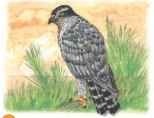
Perching…
From a hidden perch high in a tree, a northern goshawk looks out over an adjacent clearing and surveys it for prey.
BEHAVIOR
The northern goshawk is solitary except during the breeding season. Although it is active all day, it usually hunts during the early morning and evening. During the hottest parts of the day, the northern goshawk roosts in a tall tree where it watches over its territory. Like all raptors, the goshawk is highly territorial and defends an area as large as 5,000 acres in some parts of its range. The northern goshawk is mainly sedentary, but some populations in the northern parts of its range migrate as far south as Mexico in October for the winter months; these populations return to the northern breeding grounds in March.
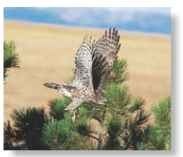
A Soaring high
The goshawk majestically soars through the air.
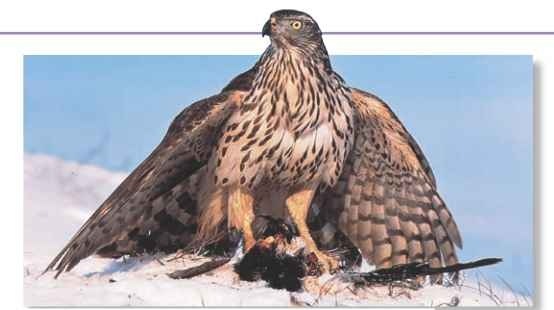
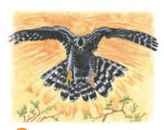
Swooping…
Spotting a snowshoe hare (Lepus americanus), the northern goshawk swoops down from its perch toward its victim.
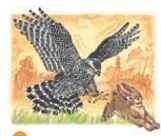
Seizing…
Seeing the goshawk, the hare attempts to escape by racing away; however, it is no match for the hawk’s powerful talons.
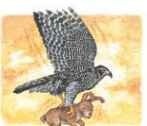
Holding
With the vice like grip of its sharp talons, the goshawk firmly holds onto the struggling hare.
The goshawk is very bold when hungry and has been known to seize chickens in the presence of humans; it has even attacked wooden duck decoys that were placed in a marsh by hunters.
When hunting or angry, the goshawk’s eyes turn dark crimson; the eyes of an angry female were such a fiery blood red that an observer thought she was seriously injured.
The female frequently pulls and loosens the bottom of the nest; this provides sufficient aeration to prevent the growth of mold and maggots.
BREEDING
Like most birds of prey, the northern goshawk is monogamous and mates for life. After wintering alone, the female returns to the nesting site from the previous year and calls to attract her mate with high-pitched screams. Both sexes perform flight displays, which include soaring over the nest site. The nest, made of sticks lined with twigs and leaves, is repaired, or a new one is built. After mating, the female lays 1-5 eggs (usually 3-4) and does most of the incubating, turning the eggs every half hour The male hunts and brings her food during this time. After 35-38 days, the eggs hatch and the chicks are covered in grayish-white down. Both sexes vigorously defend the nest from intruders, including humans, and attack anything that ventures too close. The young hawks fledge in 34-45 days, with the males fledging about one week before the females; however, they do not permanently leave the nest for 70-90 days. Sexual maturity occurs between 2-3 years of age, but sometimes female goshawks mate at 1 year
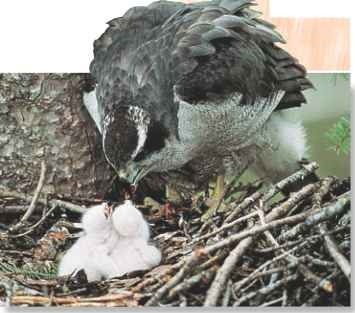
A Parental care
Well known for its attacks on intruders, the northern goshawk protects and cares for its young.
PROFILE
Northern Goshawk
With its short, rounded wings and long, narrow tail, the goshawk twists and darts at incredible speeds through the forest in pursuit of prey.

CREATURE COMPARISONS
Found only in Cuba, the Gundlach’s hawk (Accipiter gundlachi) is a close relative of the northern goshawk. Unlike the goshawk, which inhabits the mature coniferous and deciduous forests of lowlands and mountainous regions, the Gundlach’s hawk occurs in the tropical, evergreen and marshy forests along the coastline. The Gundlach’s hawk is dark gray above with a gray breast and rufous barring on its belly and thighs, compared to the goshawk, which has a blue-gray back and white and gray underparts; both species have black caps on their heads. At 16.5-20” in length, the Gundlach’s Northern hawk is smaller than the northern goshawk. goshawk
| VITAL Weight |
STATISTICS Male 1-2.5 lbs.; female 1.75-3.5 lbs. |
| Length | 19-27” |
| WlNGSPAN | 38-50” |
| Sexual Maturity | 2-3 years |
| Breeding ‘ Season | April-June |
| Number of Eggs | 1-5; usually 3-4 |
| Incubation Period | 35-38 days |
| Fledging Period | 34-45 days |
| Breeding Interval | 1 year |
| Typical Diet | Mostly small birds, mammals and reptiles |
| Lifespan | Up to 19 years in captivity |
RELATED SPECIES
• The northern goshawk is the largest member of the 50 species in the genus Accipiter; close : relatives include the African goshawk, A. tachiro, the Chinese goshawk, A. soloensis and the Cooper’s hawk, A. cooperii. The family Accipitridae contains 237 species in 64 genera of hawk and eagle. There are about 289 species of hawk, eagle, falcon and vulture in the order Falconiformes.
